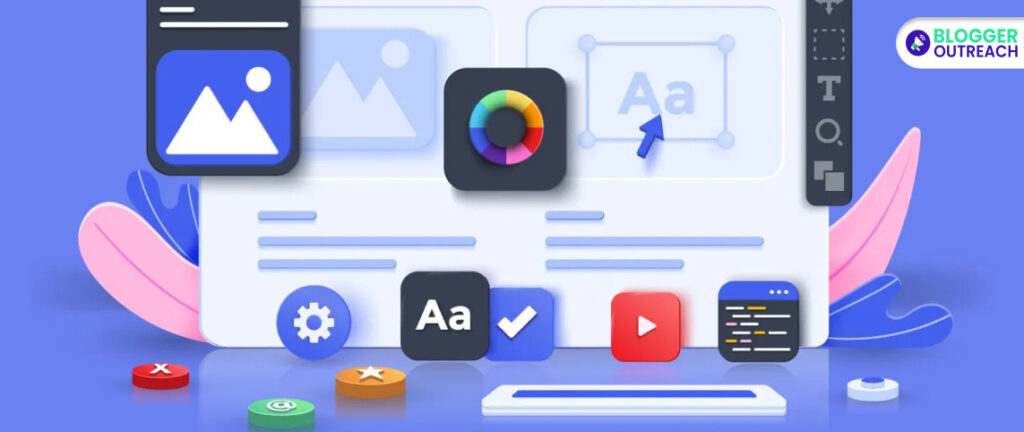Table Of Content
💡Blogs with Infographics produce 178% more inbound links than blogs without them.
In fact, Infographics, when crafted effectively:
💹Enhance organic traffic.
🌐SEO rankings.
✔Brand recognition.
🟣Establishes topical authority.
Most importantly…
Infographics attract highly relevant backlinks to your site.
Crafting a link-worthy infographic isn’t just about aesthetics. There is more to it.
Infographic link building uses compelling visuals to display data, making information easily shareable and engaging.
This article reveals steps to create effective infographics and offers outreach tips for optimal results.
So, learn about infographic link building, its benefits, creation, and top outreach techniques.
Here you go…
A Brief Explanation Of (What & Why) Infographic Link Building

Infographic link building is a savvy SEO tactic. It involves crafting captivating infographics and leveraging them to enhance your website’s visibility. Hence, you earn high-quality backlinks.
Essentially, infographics present information in a visually engaging format. Fusing content and graphics allows readers to access the information they need quickly.
Infographic link building demands time and effort. Gathering informative content for your online audience can take hours or even days. Overcoming Google’s algorithms presents additional hurdles.
Thus, learning how to devise a backlinking strategy using infographics is vital.
Why Is It Important?

Infographic link building can skyrocket your business to its apex level.
✅Attracts High-Quality Backlinks
The more people share your infographic, the more chances you have to earn valuable backlinks. When other websites link back to your infographic, it boosts your website’s authority and SEO ranking. These backlinks are like votes of confidence in your content.
✅Sharability
When you create compelling infographics, people are more likely to share them. It’s as easy as clicking a “share” button on social media or embedding it on their own websites. This sharing behaviour is like a gift for your link building efforts.
✅SEO Boost
Backlinks play a crucial role in SEO. Google and other search engines consider the number and quality of backlinks when ranking websites. Infographics can help you earn these backlinks, significantly boosting your site’s SEO.
✅Building Authority
When you consistently create well-researched infographics, you establish yourself as an authority in your niche. People trust your content, making them more likely to link to your website.
✅Long-Term Benefits
Unlike some types of content that have a short life span, infographics have long-term value. They can continue to attract links and traffic over an extended period, providing an ongoing boost to your SEO efforts.
✅Link Bait
High-quality infographics are like irresistible bait in the world of online content. They draw attention, and websites are more likely to link to your infographic when it’s valuable and appealing.
Types Of Infographics Important For Link Building
Knowing different types lets you create infographics that people want to share. It can lead to more backlinks for your website, helping with your link-building efforts.
- Data Visualizations: These infographics showcase statistics and data clearly and visually.
- How-to Guides: Step-by-step infographics guide users through processes, making them valuable and shareable.
- Comparison Charts: They compare different options or products, helping users make informed decisions.
- Timeline Infographics: Showing historical events or progressions can be engaging and link-worthy.
- List-Based Infographics: Presenting information in a list format is easy to scan and share.
- Storytelling Infographics: These narrate a story or journey, keeping readers engaged.
- Process Flowcharts: Explaining complex procedures visually makes it easy to understand.
- Geographical Infographics: Maps and location-based infographics add an interactive element.
- Statistical Analysis: Analyzing trends and patterns with data can attract links from those interested.
- Educational Infographics: Informative content in a visually appealing way is link-worthy.
Step-By-Step Plan For Infographic Link Building
As a leading link building service provider, we’ve created thousands of link-worthy infographics.
We Compiled The Following Strategies Based On Our Years Of Experience:
Step#1: Pre-Design

Infographic link building comes with a clear purpose. You can not start anything randomly. Here, you need planning and preparation.
✅Start With Setting Clear Objectives
Infographics serve various purposes. For this article, we’re focused on using infographics to earn backlinks for your website.
Your SEO goals guide the choice between infographics and other strategies.
Mostly, It Revolves Around The Following:
- Building links to specific pages through guest posting is effective but costly. Infographics can reduce the long-term cost per link due to their content efficiency.
- For general content marketing with long-term goals, infographics offer value. A well-executed outreach campaign can lead to backlinks and greater exposure.
✅Choose A Topic That Is Apt For The Audience
To begin, choose your infographic topic and design style. But even before that, ensure that you know your audience well.
i.e., you must be aware of what they exactly want from you. Then comes finalizing the topic.
🟣You can find inspiration on Pinterest ly by exploring top-rated pins in your niche. This helps you create an effective infographic.
🟣Take your time exploring the existing infographics. Jot down what you think could benefit you.
🟣Form a list of Visual.ly URLs for each infographic. Also, locate the source on the creator’s website and make a note of it.
🟣Employ Google Images to search for popular infographics.
🟣Next, use an SEO tool like Ahrefs to discover already successful infographics. Filter by ‘referring domains’ and select four to five infographics that have gathered a lot of links.
🟣Add all these to your master URL list.
🟣Lastly, determine your concept and title. Consider brainstorming ideas by drawing from your list of successful infographics.
We typically combine two or three ideas into a potent single infographic for link building infographics.
Step#2: Content Creation

Congratulations on choosing your topic. What’s next?
It’s no secret that content is the main thing that you need to consider here. Content creation for infographics link building involves the following steps.
✅Decide Your Narrative
Once you’ve gathered your research and identified your infographic’s target audience, it’s time to create a captivating narrative that will hold your readers’ interest throughout.
Visual storytelling is a unique art, and it’s crucial to grasp this when shaping your infographic’s storyline.
Lead your readers on a journey. Instead of scattering statistics randomly, arrange your information logically – starting from a clear beginning and guiding them to a thoughtful conclusion.
In fact, think of your infographic as a visual roadmap, illustrating how you’ll take your reader from point A to point B.
✅Researching Your Data
It’s time to find out the information you want in your infographic link building. This step should precede handing it over to a designer.
Basically, there are two primary options for gathering your data:
Utilize data from existing infographics. Be cautious not to plagiarize, aiming for a unique infographic.
Source your data via Google searches.
Simply Enter:
- keyword + data
- keyword + trends
- keyword + statistics
- keyword + facts
You should obtain valuable results to incorporate into your infographic brief. Don’t forget to include all relevant source URLs and attributions.
These add authenticity to your link-building infographic. People appreciate the effort you put into researching multiple data sources and websites, which ultimately aids in building backlinks.
✅Supporting Content
If you’re exclusively utilizing your infographic for link building…
…here’s how to craft the supporting content for maximum placement potential.
Create a captivating introduction. Your header should effectively direct your readers to your infographic. Ensure there is room for keyword optimization by writing some content as well.
Here’s A Framework You Can Follow:
- Make A Bold Assertion. Begin with a bold, broad, and straightforward statement that resonates with most people in your niche.
- Provide Evidence. Substantiate your claim with a compelling supporting statistic that aligns the reader with our perspective.
- Offer A Unique Viewpoint. Conclude with a brief discussion about the challenges surrounding your initial statement, another section reinforcing the problem you aim to solve, and a sentence introducing your infographic as the solution.
By experimenting with this framework, you can adapt it to your specific needs, creating a template that optimizes your outreach efforts.”
Step#3: Design

Identifying the best way to represent your information is crucial before you begin designing. Selecting the appropriate template will be guided by this choice.
✅Wireframe Creation
At this point, the topic and content are ready. Let’s start by creating a wireframe creation.
- Define Key Points: Identify the main points you want to highlight. These should be clear, concise, and valuable to your readers.
- Layout & flow: Sketch the basic structure of your infographic. Decide on the flow, arranging the key points logically. Use boxes or bubbles to represent different sections.
- Content Segmentation: Break down the information into sections, ensuring each section has a clear message. This helps with readability and understanding.
- Visual Elements: Plan what visuals you’ll use, such as icons, images, or graphs, to support your content. Make sure they align with the topic and are visually appealing.
- Typography: Decide on the fonts for headings and body text. Make sure they are easy to read and suit the overall design.
- Simplicity is Key: Keep your wireframe simple. Stick to the basics, and don’t overcrowd it with details. This is the foundation for your design.
✅Design Phase
Now, let’s move on to the design phase:
- Create A Digital Canvas: Transfer your wireframe to a digital design tool, like Adobe Illustrator or Canva, where you can work on the final design.
- Graphics & Icons: Add the chosen visuals to your canvas. Ensure they are of high quality and enhance the message. Icons and images should be self-explanatory.
- Text & Headings: Insert your content into the infographic. Keep the text concise and to the point. Use clear headings for each section to guide the reader.
- Colour & Style: Apply the colour scheme you selected earlier. Use it consistently across the infographic. Maintain a style that aligns with your brand.
- Whitespace: Ensure there’s enough white space around elements. This makes the content more digestible and visually pleasing.
- Check Readability: Make sure all text is legible. Adjust font size and style if necessary. Test it to see if a 6th grader can understand it.
- Mobile-Friendly: Optimize your design for mobile devices. Check if it’s easily viewable on smaller screens.
- Review & Proofread: Go through your infographic for errors, typos, or inaccuracies. A polished infographic reflects professionalism.
- Sharing Elements: Add social sharing buttons to encourage link sharing. Also, include your website’s URL or logo for attribution.
- Save & Export: Save your infographic in multiple formats for various platforms. PNG and PDF are common choices.
Remember, simplicity, clarity, and quality are your friends in infographic link building. Once your infographic is ready, ensure it attracts the right links.
Step#4: Outreach

Outreach requires a step-by-step approach. Here you need to keep certain practices in mind. Here are they…
- Personalized Outreach: Address website owners by name and mention their content. Personalization makes your pitch stand out.
- Craft A Catchy Subject Line: Create an engaging subject line that piques their interest.
- Brief Introduction: Start your email with a concise introduction about yourself and your website.
- Highlight Infographic Value: Explain why your infographic is valuable to their audience. Use facts and statistics.
- Link Placement: Suggest where the infographic link would fit naturally within their content.
- Mutual Benefit: Emphasize the benefits of this collaboration for both parties. Mutual gain is a persuasive factor.
- Call To Action: Encourage them to reply or express interest. Make it easy for them to respond.
- Politeness: Be courteous and respectful throughout the email. A friendly tone goes a long way.
✅Email Template For Image Link Building Outreach
Subject: <Topic Name> Infographics for 5X Backlinks
Hi [Recipient’s Name],
My name is [Your Name], and I have been a ardent reader of your content quite a few times. Recently, I came across your fantastic content on [Their Website’s Name].
I recently created an infographic that I believe would be a valuable addition to your content. It’s about [Brief Description of Infographic Topic], and it contains [mention key statistics/facts].
The reason I’m reaching out to you is that I think our infographic would be a great fit within your existing content. It can enhance the reader’s experience and provide additional insights.
You can view the infographic here: [Link to Infographic].
I believe that featuring our infographic on your website would be mutually beneficial. It enriches your content, and in return, I’d be happy to share your page on our social media channels.
If this idea resonates with you, please let me know your thoughts, and we can discuss the specifics. If you have any questions or need more information, feel free to ask.
Thank you for considering this proposal. I look forward to your response.
Regards,
[Your Name] [Your Contact Information]
This email template follows the best practices for image link building outreach. It’s friendly, concise, and offers mutual benefits, making it more likely to receive a positive response.
As it is friendly, concise, and offers mutual benefits, it is more likely to be accepted.
Bottom Line
You have enough ideas about infographic link building, it’s time to incorporate all the strategies into action.
Infographics elevate link-building efforts from ordinary to extraordinary. If your content is shareable, others will happily link to it.
To succeed, create top-notch, unique infographics.
Quality and originality are key for successful infographic link building.
Need help with content?
With BloggerOutreach, you can create top-notch content in one place. All of our content is 100% SEO-optimized, bringing surefire results.
If you want to know how we really work, talk to our experts.
Read Also:








